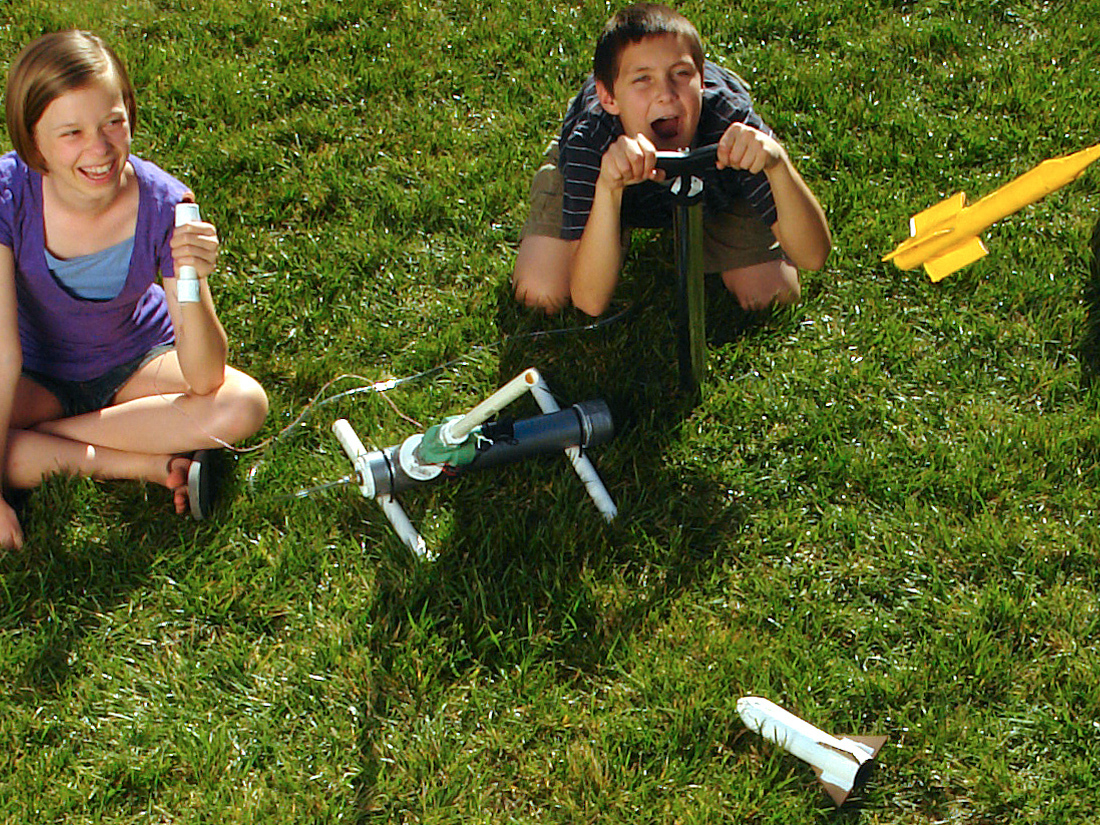Building this rocket launcher is a breeze, and folks are always amazed at how it shoots reusable paper rockets 200–300 feet high.
The launcher is made from PVC pipe. You pressurize its chamber to 75psi with about 18 strokes of a bicycle pump, then release all the pressure in a split second through an electric sprinkler valve, sending the paper-and-tape rocket into the sky.
Older kids can do the soldering, and adults should be on hand to supervise the launches, but younger kids can make the rockets and launch them too. It’s mind-blowing how high they go.
We recently revised the Make: Compressed Air Rockets Kit just in time for Maker Faire Bay Area 2012. So if you bought it in the Maker Shed store at Maker Faire, we thank you for your patience as we’ve put the full kit instructions online for the first time. Enjoy your kit! Buy the latest version here.


